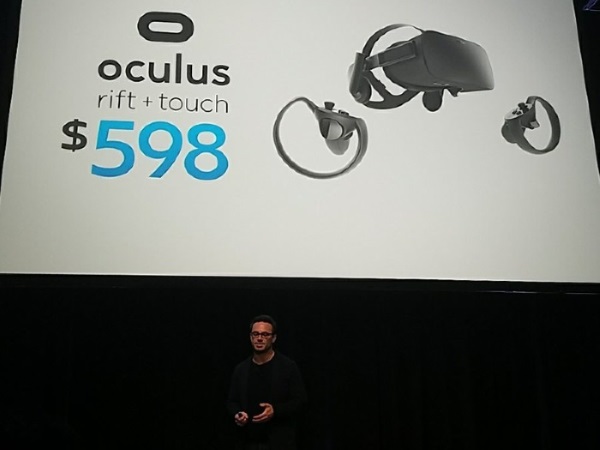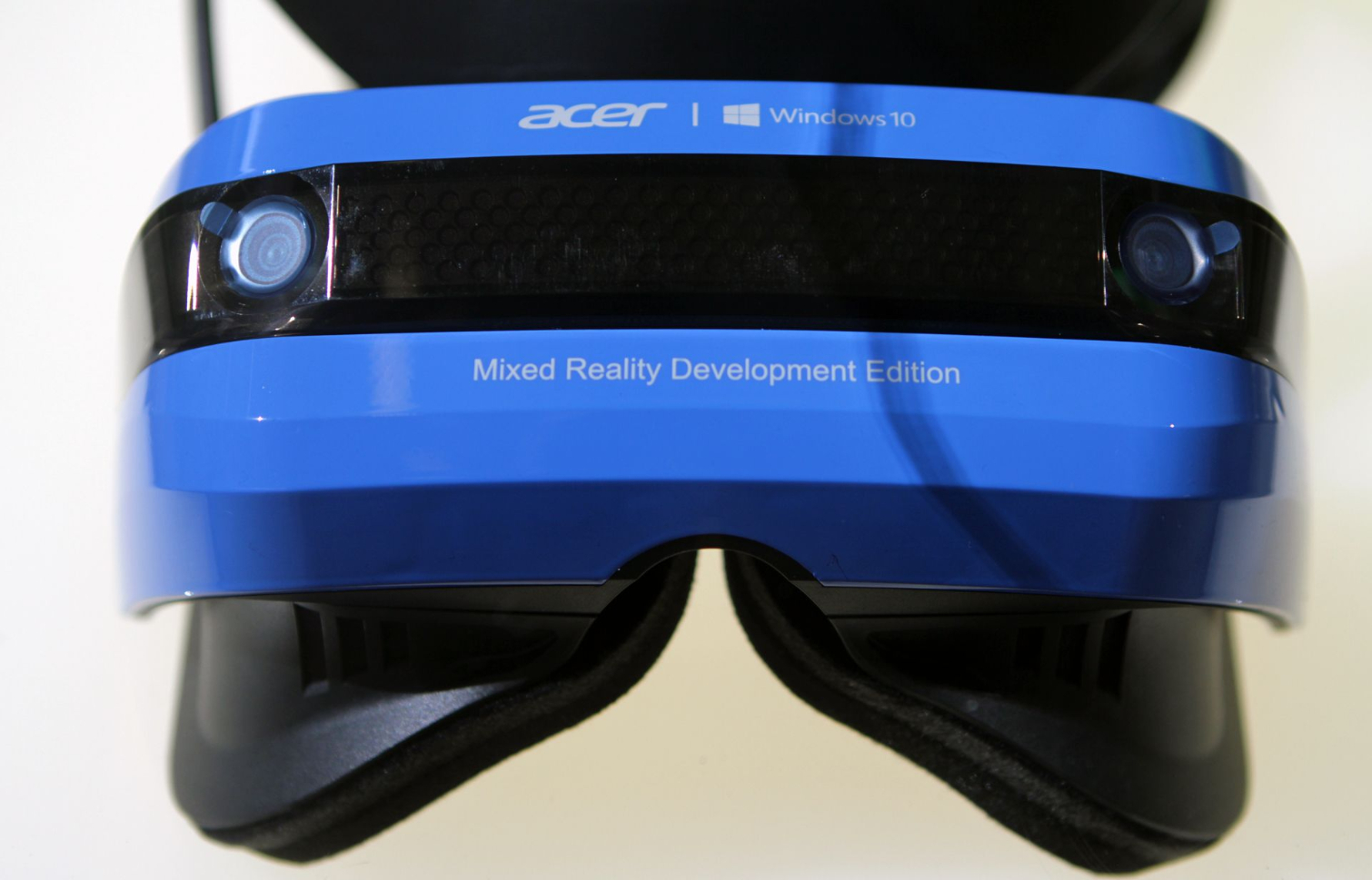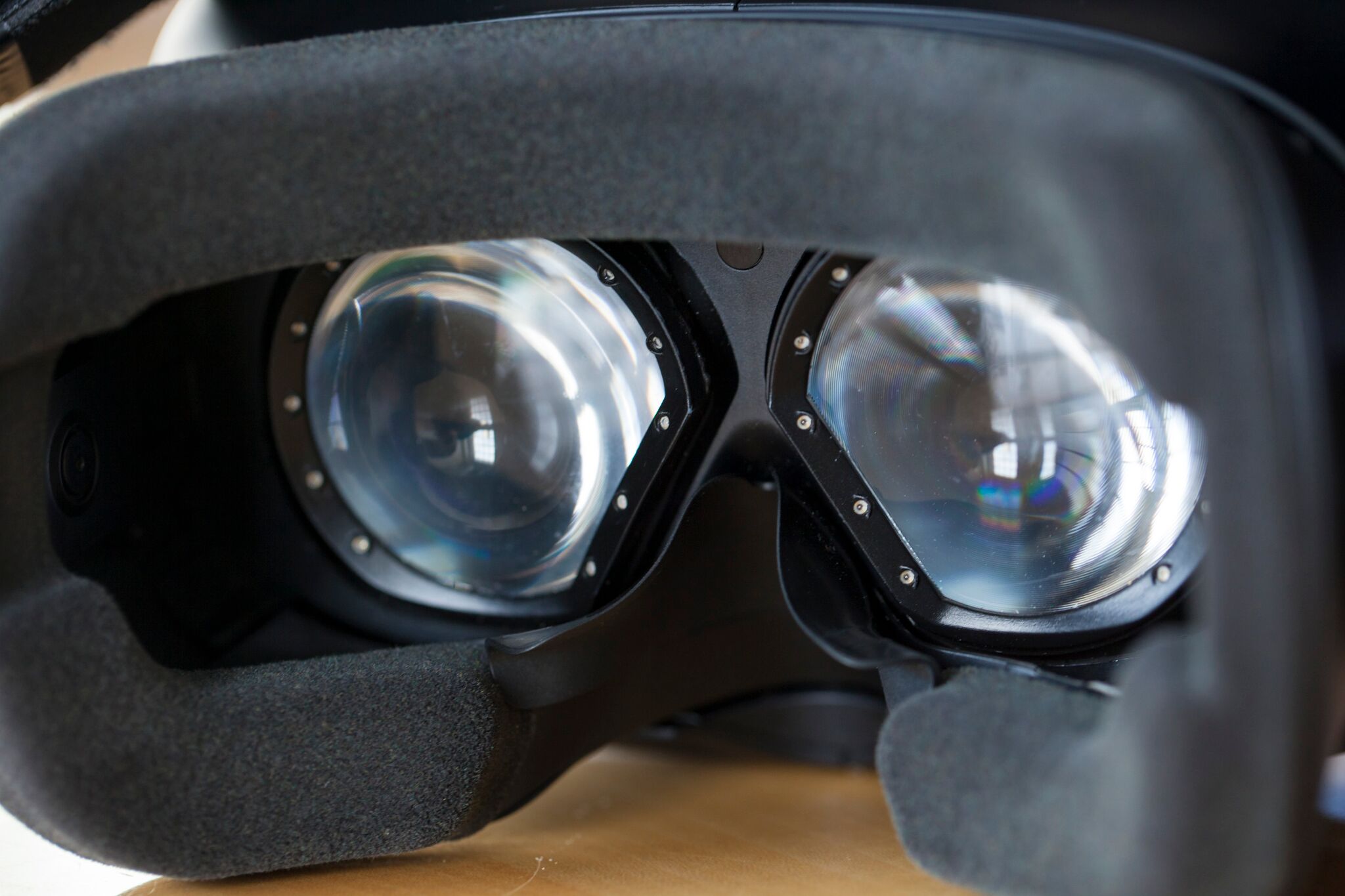Tom's Hardware's GDC 2017 Highlights
Enthusiastic Nerds, Assemble
Every tradeshow we attend is heavily populated with enthusiastic nerds like ourselves, but gaming-focused tradeshows are a special case. GDC, located in lovely San Francisco, is brimming with the people who actually make the games you love as well as many of the people who make the hardware that lets you run those games.
This year, we saw quite a bit of hardware, as a matter of fact, much of it in the form of technology that you’ll be enjoying in the next round of VR, AR, and MR devices. We also, of course, got a look at some exciting new PC and VR games.
One of us also competed against a professional wrestler in a VR game of speed while another one of us may or may not have swooned.
It was a good show for Tom’s Hardware. What follows is some of the highlights.
MORE: Best Virtual Reality Headsets
MORE: The History Of Virtual Reality
LG Will Compete In The High-End VR HMD Market
The emergence of LG’s own VR HMD is striking for a couple of reasons.
Get Tom's Hardware's best news and in-depth reviews, straight to your inbox.
First of all, it was quite impressive. In the two brief demos we saw, we found the image quality to meet, if not surpass, anything we’ve seen in an HMD.
Further, it has tracked controllers, as well as base stations that give it outside-in tracking. It's every inch a high-end HMD on the order of the Rift, Vive, and PSVR. It will be a true competitor whenever LG finalizes the design, which its designers plans to do once they take home the feedback they gleaned from GDC attendees.
It may even offer some form of mixed reality.
However, it's incredibly similar to the HTC Vive, and that's because Valve is the LG headset's ODM. Which raises a number of intriguing and exciting questions about how much of the Vive's IP belongs to HTC versus how much belongs to Valve, and whether we’ll be seeing more Vive-like HMDs from more manufacturers soon.
MORE: Best Graphics Cards
MORE: Desktop GPU Performance Hierarchy Table
Nvidia GTX 1080 Ti
Nvidia pulled the curtain back on its highly-anticipated GeForce GTX 1080 Ti. Whereas AMD revealed almost nothing about its RX Vega, Nvidia was more forthcoming with the new green team flagship GPU. With purportedly higher performance than even the $1,200 Titan X, the GTX 1080 Ti comes in at $700 and pushed the price of the GTX 1080 to a keen $500. Moreover, it's coming next week.
The GTX 1080 Ti's Founder's Edition features 3,584 CUDA cores with 11GB of GDDR5X. The outputs also received a makeover, with the DVI-D port seen on previous Nvidia GPUs getting the boot in favor of increased ventilation. The memory backend was shaved down, but Nvidia said it performs around 30% faster than the GTX 1080.
However, the claim that it even beats out the Titan X is questionable (we can't imagine it beating a Titan X by significant margin, but the forthcoming reviews will tell the story), but everything about the GTX 1080 Ti (at least, on paper) portends a new top-tier graphics card that won't cost as much as a Titan-series GPU, which is a great thing for the enthusiast GPU market.
MORE: The Oculus Rift Review
MORE: Oculus Rift Vs. HTC Vive Vs. Playstation VR
Oculus Rift Price Plummets
Talk about surprises. Of all the things you thought Oculus would do at GDC, a price change probably wasn’t one of them. Nevertheless, the company did exactly that at Epic Games' State of Unreal keynote event.
Prior to the announcement, the Oculus Rift and Touch bundle would cost you $800. Now, you can purchase the two devices at a combined cost of $600, the original price for the Rift headset. The Touch controllers initially launched with a $200 price tag. In addition, the company also reduced the price of additional Constellation trackers. What once cost $79 is now just $59.
The price drop might just be what Oculus needs to turn things around in light of recent events. In a court case against ZeniMax Media, Oculus was cleared of any charge related to the misappropriation of trade secrets. However the company, co-founder Palmer Luckey, and Brendan Iribe, the head of the company’s PC VR division, were found guilty of a breach in a non-disclosure agreement and both parties now have to pay a combined total of $500 million to ZeniMax. To make matters worse, ZeniMax filed an injunction that would could prevent the sales of both the Rift and Samsung Gear VR devices.
With the price drop, Oculus might be offloading as much of its HMDs as possible while gaining more funds to help pay for the punishment. In any case, the barrier to entry for high-end VR is now slightly lower. If you have the money, you should think about getting your own Oculus Rift VR bundle.
MORE: The Oculus Touch Motion Controller Review
MORE: Nvidia GameWorks VR Explained
New VR Locomotion Tricks
We saw a slew of developers addressing the known issues of VR locomotion, with several games including Brass Tactics, Vindicta, and Sprint Vector all taking a new approach to movement within a virtual environment. Classic locomotion (whereby you press a button and propel forward or backwards) has been problematic for a large percentage of VR users, and teleport functions are inept in competitive first-person shooter games (especially multiplayer games).
In the case of Vindicta and Sprint Vector, which would undoubtedly be a puke festival with push-button locomotion, the solution is to make the user swing their arms. For Brass Tactics, the playfield could be moved around the user, who would have to grab and pull parts of the map to traverse it.
On paper, these seemed like insufficient answers to the problem, but after we tried it, we were somewhat dumbfounded that a simple change of physical interaction could affect the comfort of your experience so significantly. It could be described as a Jedi mind trick, but as silly as the concept sounds, we can attest to its legitimacy.
MORE: The HTC Vive Review
MORE: HTC Vive VR Launch Titles
A Harbinger: Cloudgate’s Use Of Vive Trackers
For as much as VR has blown us away, there are many features missing from even the highest-end HMDs that we have all sort of excused as something that will be fixed down the road.
One of those is additional tracking, be it tracking handheld devices like rifles for first person shooters or full body tracking. It's extremely disorienting, if not downright alarming, when you're in a virtual space and look down only to discover that your body did not accompany your brain and eyes into the simulated environment.
Well, almost a year past the release of the Oculus Rift and HTC Vive, we’re getting further “down the road,” and it's time some of these issues are seriously addressed.
The Vive trackers are an effort to do so. You can stick them on various devices--or, it turns out, appendages--to add more tracking for a VR experience.
Cloudgate Games uses three of them to bring your torso and body into VR and create a full-body avatar for its dinosaur-hunting game, Island 359. The setup is still a work in progress, but it does work; expect this to be a harbinger of the expanded tracking innovations to come to VR titles.
MORE: Best Gaming Laptops
MORE: Best PC Builds
Acer Mixed Reality HMD Developer Kit
We're not entirely sure what's going on in Wintel land these days. Microsoft and Intel are working together to push the XR market forward by providing guidance around specs and designs for mainstream XR HMDs and the midrange PCs that will support them. (Also, there's HoloLens and Project Alloy, neither of which really line up with the mainstream HMD/PC plans.) This is absolutely a necessity for the nascent industry, and the latest step is that Microsoft and Acer co-announced a mixed reality development kit HMD called the Acer Windows Mixed Reality Development Edition.
Although this device is likely a harbinger of more, similar HMDs to come, we know little about it. The revealed specs list is sparse; we know that it offers 1440x1440 per eye resolution (on LCD) with a refresh rate of 90Hz, built-in audio out and a 3.5mm mic jack, and a two-ended HDMI 2.0 and USB 3.0 cable, and that it will do mixed reality somehow.
What we don't know is a price, nor when we might see a final consumer version, nor how they’ll implement the mixed reality part of things. It is, in a way, a black box--and that's an apt larger metaphor for Wintel’s plans for the market. Much has been said about it, but little has been defined. We believe that partially, Microsoft and Intel are hoping that device makers will fill in the gaps from the framework they’ve been given, but it seems that those hardware companies might want some more specifics. Chicken, egg, repeat. But at least now there’s an egg. (Or is it a chicken? Eh, you know what we mean.)
MORE: Best Cases
MORE: Best CPU Cooling
Integrated Eye Tracking (SMI And Tobii)
Integrated eye tracking in virtual reality just graduated from a concept into a real thing thanks to the efforts of SMI and Tobii, with both companies demoing their technology in a fully-integrated HTC Vive headset. The end results of each of the different eye-tracking solutions were visually indiscernible; both integrations feature a ring of illuminators around the lenses, and both have the cameras installed behind the lenses.
Both were impressively accurate, non-obtrusive (it's no longer a sensor bar bolted into an HMD), and easy to calibrate (so long as you don't wear glasses, like Seth Colaner, our News Editor). SMI and Tobii's demos were inherently different, but they were similar in nature, showcasing the use cases for eye tracking within VR. However, whereas Tobii showed us the basics (targeting, social, and NPC interaction), SMI also showcased foveated rendering techniques.
Having two different eye-tracking technologies competing against each other in the same market space (in this case, HTC Vive integration) presents developers and consumers with an interesting choice. Does one choose SMI for its low-cost integration (the parts still cost under $10) or Tobii for its relationships with big-name publishers (which, in theory, could manifest more games developed specifically for Tobii)? The answer to that likely depends on which side of the developer/consumer table you sit, but having two eye-tracking technology companies is better than one, and it portends a possible long-term play of an ecosystem of HMDs with different levels of features and quality.
MORE: Best CPUs
MORE: Best Memory
The War For Mordor Continues
Monolith Productions is back with the next chapter of its Middle-earth series. To kick off the week, the company announced Middle-earth: Shadow of War, which arrives later this year on August 22.
Just like the first game, Middle-earth: Shadow of Mordor, you will control the Ranger named Talion and his elvish Wraith counterpart, Celebrimbor. The duo are taking their fight against Sauron and his dark army even further in the sequel by raising their own army of Orcs. The series’ Nemesis system, which let you eliminate or capture Orc bosses as you fought your way up to the ranks of the stronger captains, was also improved for the second game. Monolith briefly mentioned the term “Nemesis Fortresses,” which could mean that the strongest foes will hide in their keeps, and you’ll have to attack it with your own forces.
For now, the studio released a single trailer for the game. However, it plans to show off the first bits of gameplay on March 8. If you’re curious about what you’ll need to run the game, you can check out the hardware requirements, which showed up on Steam just a few days after the announcement.
MORE: Best Virtual Reality Headsets
MORE: The History Of Virtual Reality
Xbox Gets A Game Streaming Service
Later this spring, those with an Xbox One will have the option of growing their library of titles even further. Microsoft introduced Xbox Game Pass, which will have more than 100 games in its catalog ready to stream, for $10 per month.
What sets Xbox Game Pass apart from other game streaming services is that you don’t have to stay connected to an Xbox server to play a game. Instead, you can download it and play it locally on your console without the need for a constant online connection. The library will consist of both Xbox One and Xbox 360 titles, and if you’re a Game Pass subscriber, you can purchase the Xbox One titles in the library and their add-on content at a discount.
Microsoft didn’t reveal a release date, and there’s also some concern that the service won’t be available on the PC. Initially, the announcement FAQ mentioned that the service would be available on the console as well as Windows 10 devices. However, the page has since been amended to say that it was available only on the Xbox One.
MORE: Best Graphics Cards
MORE: Best Gaming Monitors
Tasty New VR Titles
Predictably, at the Game Developers Conference (an event where developers who develop games gather to talk about game developments), we saw a number of new and upcoming VR titles. Some of them look like good clean (or maybe not so clean) fun, like the cartoonish and bloody GORN, whereas others surprised us with new types of gameplay.
CCP Games went with something completely different with its sportsy Sparc, From Other Suns promised to be the spiritual sequel to Subet Games’ 2012 title FTL (in space!), and we saw yet another tabletop VR game with Blade And Soul. 4A Games, the guys behind the Metro series, outed a shooter title set in a frozen dystopia called Arktika.1.
Also, this week Epic Games announced that its (closest thing to a) AAA title, Robo Recall, will be free.
MORE: The HTC Vive Review
Tom's Hardware is the leading destination for hardcore computer enthusiasts. We cover everything from processors to 3D printers, single-board computers, SSDs and high-end gaming rigs, empowering readers to make the most of the tech they love, keep up on the latest developments and buy the right gear. Our staff has more than 100 years of combined experience covering news, solving tech problems and reviewing components and systems.
-
envy14tpe Who is tomshardware? I have yet to see a real person. You guys should go youtube...even though tech youtubers are plentiful.Reply -
TechyInAZ Tom was the founder of Tom's Hardware years ago, though I don't think he works directly with Tom's Hardware anymore.Reply
It might be a good idea to go youtube, but the competition would be fierce... -
RavenDeth VR is currently way overblown. It's VR this and VR that and the huge bricks on your face. But how about all the issues? People getting dizzy, headaches and sick using these devices. You can't use them for long periods of time or the above happens. These are not designed for the mass market and are way overpriced for what they do.Reply
And yet, all these companies are pushing this tech on us and the media eats it up. I'll get into VR when they remove the huge headset requirement and don't make people get headaches or sick after using the devices. -
scolaner Reply19379405 said:Who is tomshardware? I have yet to see a real person. You guys should go youtube...even though tech youtubers are plentiful.
Heh. Our faces are pictured below the articles we write. (Except for on a piece like this one, where multiple editors/writers contributed.)
The "Tom" of Tom's Hardware is a real guy, yes. Dr. Tom Pabst. He stepped away a decade or so ago. As we're fond of saying now, "we're all Tom." -
scolaner Reply19379693 said:VR is currently way overblown. It's VR this and VR that and the huge bricks on your face. But how about all the issues? People getting dizzy, headaches and sick using these devices. You can't use them for long periods of time or the above happens. These are not designed for the mass market and are way overpriced for what they do.
And yet, all these companies are pushing this tech on us and the media eats it up. I'll get into VR when they remove the huge headset requirement and don't make people get headaches or sick after using the devices.
Have you tried a Rift or Vive or PSVR? -
elho_cid Reply
It's just another attempt to create a new market for devices no-one really needs. Just like the smartwatches few years ago, and it will probably fail as well. And VR already failed to gain mass market interest twice since 80's. Despite all the attention it got from tech magazines.19379693 said:VR is currently way overblown. It's VR this and VR that and the huge bricks on your face.
-
ubercake They should create a VR program for people to see what it's like to wear a VR headset for more than a couple of minutes. This way there wouldn't be so much talk about VR.Reply -
scolaner Reply19387348 said:They should create a VR program for people to see what it's like to wear a VR headset for more than a couple of minutes. This way there wouldn't be so much talk about VR.
Therein lies the rub. Lots of talk about this all over the industry. It's REALLY hard to get people excited about your thing when all they can see is a (literal!) black box, and someone going "Whoa!".
There's really no substitute for seeing a good demo in a high-end VR HMD. Cardboard is super cheap and far more ubiquitous, but Cardboard and Rift/Vive/PSVR have as much in common as a go kart and an F1 racer. They both have four wheels and are fun to drive but...
I think XR adoption will come, in time. It's just going to be a little slow because it's taking so long for enough people to see the really good stuff that they get excited.
-
Co BIY I'm am a VR skeptic but ...Reply
- $200 dollar price drop on the Oculus bundle and the 1080 to $500.
The price for entry is really improving and many of the issues with the technology are getting fixed.
In a 3-4 years I suspect VR will be fully mainstream among gamers, computer geeks and tech nerds. That level of broad adoption is needed before we find out if it will have real uses beyond entertainment. I see it as big as console gaming (or at least all consoles will be VR machines) at minimum. But will it be bigger than that ?











